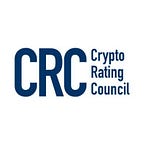How We Score Assets: ETH
As part of our mission to create practical compliance tools, we think it is important to engage with the community — development teams, regulators, and policymakers — on our members’ work. That’s why in May we published the analytical framework the CRC uses to assess whether a particular crypto asset has fewer or more characteristics consistent with treatment as a security under the U.S. securities laws. This scorecard reflects our best effort to synthesize court cases and SEC guidance into a scalable, repeatable framework of yes/no questions.
We are now taking the further step of sharing how the framework works in practice by publishing the CRC’s internal analysis of the ETH token. Our posted ETH analysis consists of three parts: (1) a scaled risk score along with a summary of key considerations, (2) a fact sheet that describes the ethereum network and ETH, as we understand them, and (3) the completed scorecard. We have also annotated this scorecard with comments and observations that are intended to help readers better understand how the facts guide our answers to each question. This analysis was performed by the CRC without involvement of the Ethereum Foundation or any other third party.
Of all the assets we’ve reviewed, why use ETH as the illustrative example? For one thing, ETH is among a small handful of crypto assets that the SEC has suggested are not currently securities (our analysis results in a relatively low-risk score of 2). For another thing, the ethereum network is better developed and more widely understood, which makes it easier to showcase the analysis.
Even for ETH, however, proper application of law to the complex and changing facts and circumstances of the ethereum network and ETH is not clear. For example, if at one point in the past ETH was a security, our framework does not allow us to pinpoint when the transition to “non-security” happened, even though the answer to that question is very relevant to members of industry. And although the SEC has enumerated various non-exclusive factors to consider in evaluating a digital asset under the pertinent legal test, the interpretation of many important factors relevant to securities law analysis — such as how to weigh ongoing contributions of a founding development team in an open source project, how to factor the efforts of network participants that contribute in different ways to consensus protocols or governance frameworks, and how to consider lingering effects of a long-concluded token sale — is also not clear. In light of this inherent uncertainty, we always remind members of the CRC and the public that our assessment, even for an asset like ETH, involves judgments and is not definitive. This lack of clarity is frustrating to members of industry, especially new entrepreneurs attempting to navigate the space, but it is the current state of U.S. law and regulation.
We look forward to continuing to work with industry and development teams as we continue to apply our framework across new and varied assets and rapidly developing technology. If you are interested in joining the CRC please contact us here.
